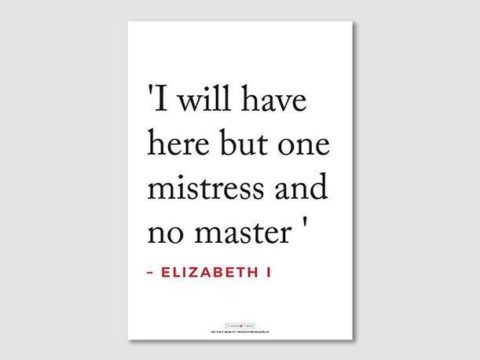Regent Moray: Life Story
Chapter 7 : Protestant Reformaton
The Lords of Congregation now entered into a second treaty with England - the Treaty of Edinburgh. Under this, a new Regency Council of 14 Lords was to be appointed, eight by Queen Mary and six by Parliament, although in practical terms the six would be chosen by the Lords. This was a level of democracy unknown in Europe. Elizabeth I would certainly have been horrified had it been suggested to her that Parliament should select her Council. Queen Mary refused to ratify this treaty, which also demanded the removal of all foreign troops from Scotland, despite the fact that the Lords of the Congregation continued to request English military aid.
Control in Scotland was now taken by retaken by James Hamilton, Duke of Châtelherault, who had been a somewhat ineffectual Regent before Marie of Guise took office. He was supported by William Maitland of Lethington, and Lord James.
A Parliament, which became known as the Reformation Parliament, opened on 10th August 1560. The most important act passed was the Confession of Faith, together with legislation making it illegal to hear Catholic mass. The Reformed faith as set out in the Confession, was now the official religion of Scotland. The English Ambassador, Thomas Randolph, wrote to Cecil that he was surprised that the Confession had been passed – even though some of its stronger terms had been watered down on the advice of Maitland of Lethington. One of three lords who voted against the Reformation Acts was John Stewart, Earl of Atholl.
Despite this fundamental disagreement, Atholl met with Lord James, and the Earl of Argyll in September of 1560 to form a league against the Earl of Huntly, who was Atholl’s rival for pre-eminence in the Highlands, and was, in fact, Atholl’s father in law. (He was also Lord James’ cousin, being, like him, a grandson of James IV.)Argyll was James’ brother-in-law, married to Lady Jean Stewart. The three allies did not believe that Huntly would accept the new status quo, although at that time they had no evidence for their concerns.
As Huntly had not attended the Parliament, he was requested to confirm his approval of the business concluded there. He did so, but this does not seem to have been enough to allay the concerns of the others. They distrusted his having sent emissaries to France to Queen Mary.
In December 1560, another death occurred that would radically affect the position of James and the rest of the Regency Council in Scotland. King François, husband of their sovereign, Mary, Queen of Scots, died at the age of sixteen, leaving Mary a childless widow.Immediately, the Queen’s mother-in-law, Catherine de Medici took the opportunity to oust the Guise family from power, and, as she disliked Mary intensely, it was soon apparent that there was no room for the eighteen year old girl in France.
Lord James was swiftly dispatched to France to advise his half-sister.The letter from Maitland of Lethington in which the Lords’ plans were revealed to William Cecil, and hence to Elizabeth I, would surely have had him hanged as a traitor, had its contents come into Mary’s hands. In it, he wrote that, should Queen Mary arrive with a naval force, her subjects could legitimately resist her, but that before they took such a step, they would consult with Elizabeth, by whose command they would be ruled. He presented the reasons why Lord James was to be sent to Mary:
‘[Lord James] is zelous in religion and one off the precise Protestantes, knowen to be trew and constant, honest and not able to be corrupted; besides that nature must move her hyghnes to beare him some good will, and it is lyke that she will rather trust him then [than] any other.’
His task was to ‘grope’ Mary’s mind as to her intentions, but he would also, if granted a passport by Elizabeth, travel via England, both going and returning to France, so that he could share everything he learnt with the English government.
Maitland expressed at great length the problems faced by the Protestant Lords.By their actions, they had overthrown the government of the Queen’s mother, entered into a treaty with the old enemy, England, and shown themselves as enemies of Queen Mary’s religion – they were very nervous about what action she would take. Maitland, in particular, was talked of as ‘a better Englishman’ even than the others – hardly likely to be appealing to Mary.
Lord James Stewart
Family Tree






